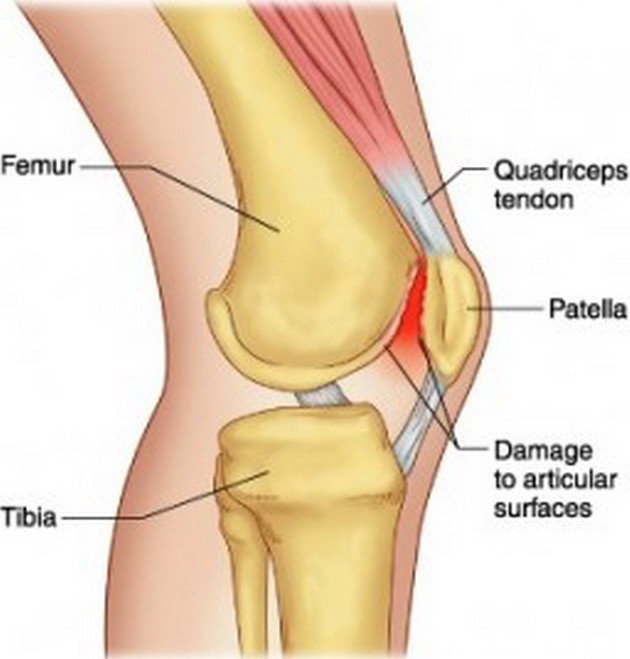
Runners knee
What are the symptoms of runners knee?
Runners knee is characterized by pain under the knee cap and around the front of the knee.
The knee does not lock or give way, but sufferers may lack confidence in the joint. Anything where the leg is bending and straightening can be painful, particularly when weight bearing.
Commonly activities that exacerbate pain include going up and down stairs, running down hill, leg extensions at the gym, or the flick of the legs when doing breaststroke, also sitting for a prolonged time with the knees bent, for example in a cinema or on an aeroplane.
Who does runners knee primarily affect?
Runners knee can affect anyone but it is most common amongst teenagers and young adults, particularly those who do a lot of sports.
It is more common amongst women then men, because the differences in pelvic shape makes the angle at the knee (this is called the Q angle) greater increasing the outward pull on the patella.
What causes runners knee?
To understand this you need to know a bit of very basic anatomy:
The patella (kneecap) has a flat pyramidal shape, so the top side under the skin is flat, and the underside has a ridge. This ridge fits in a groove in the femur (thigh bone). Every time you bend and straighten your knee the patella slides up and down the groove.
You can imagine therefore that if the patella is out of alignment eventually pain can occur.
Common things that can cause misalignment include
– Tightness in the ilio tibial band: a band of fibre that runs from the outside of the hip to the outside if the knee cap. The ilio tibial band frequently becomes tight in middle distance runners. When tight it pulls the patella outwards and out of alignment.
– Imbalance of the quadriceps: the quadriceps muscle on the front of the thigh is made up of four parts. Most forms of training strengthens the outer part more than the inner part, thus the patella is pulled out of alignment
– Tight calf muscles: if the calf muscles are tight the foot has to pronate further to gain the same movement when running or walking – this causes an increase in rotation at the lower leg leading to patella malalignment
– Tight hamstrings: if the hamstrings are tight when running or walking the knee is not fully straightened, this means the foot has to roll into pronation causing malalignment at the patella
– Weakness in gluteus medius: One of the muscles that make up the buttock, it is frequently underactive in runners. If the gluteus medius is not working well enough the upper leg rotates inwards again causing patella malalignment.
It often feels like the knee cap is grinding and clicking – this is called crepitus.
Knee pain relief
Physiotherapy is the best treatment for runners knee. Exercises will stretch tight muscles and strengthen underactive ones.
Patella stabilising knee support can also provide relief.
Check the age and condition of your running shoes. Runners knee is the most commonly reported injury in runners, and will be exacerbated by overpronation.
Read more news from our Physiotheraphy section.
Check out our Interviews section, every Tuesday a new story, tomorrow read about Jochen Schops – “We have good start in the competition”